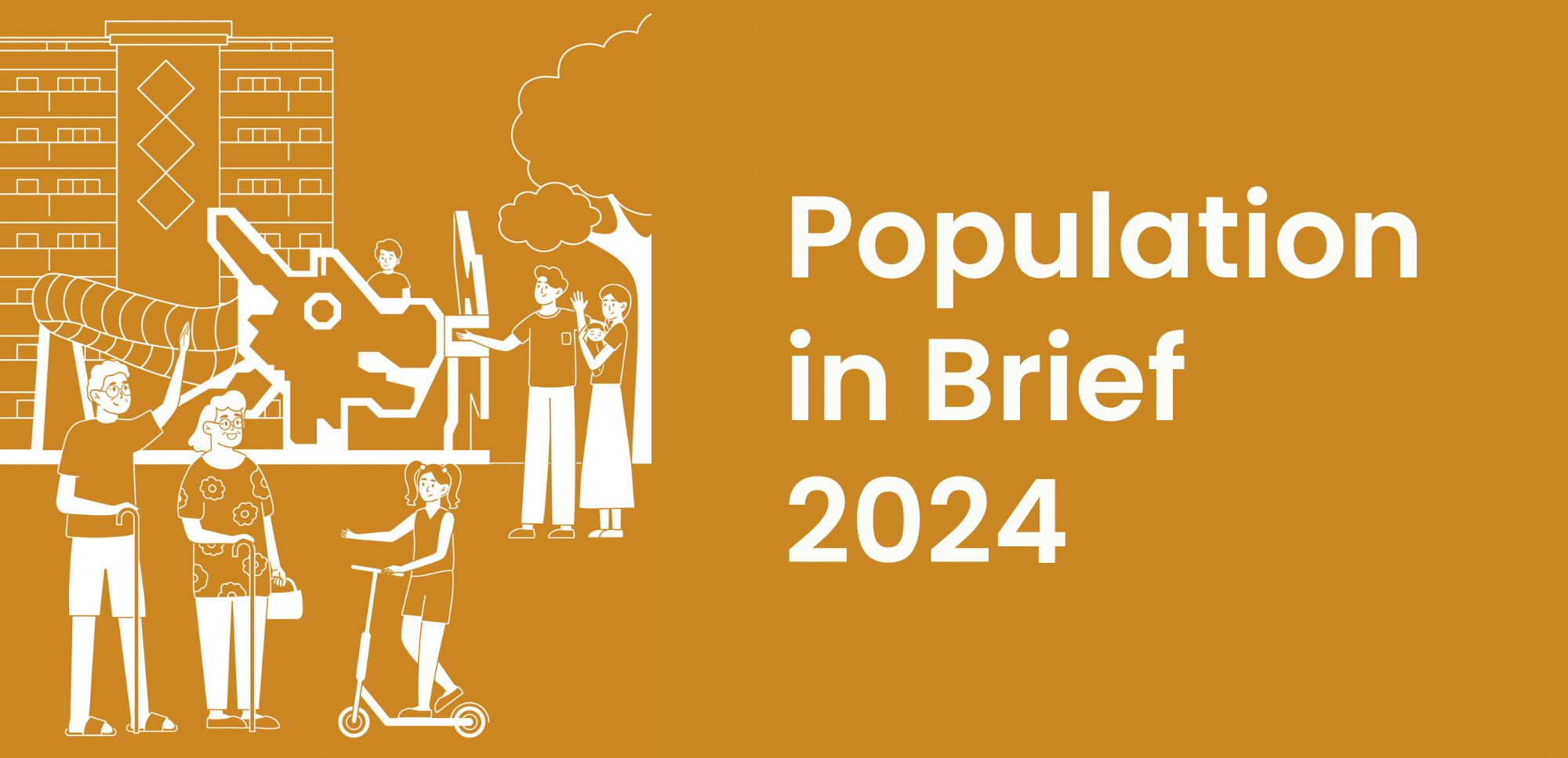For the first time in Singapore’s history, the total population has crossed the 6 million mark. As of June 2024, Singapore’s population stood at 6.04 million, a 2% increase from the previous year. While this milestone might feel distant for some, especially when juggling the daily hustle of family life, it holds significant implications for parents raising kids in this fast-paced city.
You might be wondering: What does this mean for our families? And how does this growth, driven by a rise in the non-resident population, impact the way we live, work, and raise our kids in Singapore?
The Breakdown: What’s Behind the Numbers?

Source: National Population and Talent Division
Singapore’s population growth hasn’t just come out of thin air. According to the Population in Brief report published on September 24, 2024, more than half of the population increase is attributed to the non-resident population.
These non-residents, who include foreign workers, migrant domestic workers, and international students, are crucial in supporting Singapore’s economy and society.
In June 2024, Singapore’s total population hit 6.04 million. Out of this:
- 4.18 million are residents, comprising Singapore citizens and permanent residents.
- 1.86 million are non-residents.
For parents, the rise in the non-resident population might seem like a statistic, but it’s a reminder of how interconnected our economy and society are. The foreign workforce plays a key role in construction, domestic work, and various industries that directly affect our everyday lives.
Singapore Population: A Closer Look at the Numbers
Let’s zoom in on the details. The report highlighted that:
- The number of Singapore citizens grew by 0.7%, from 3.61 million in 2023 to 3.64 million in 2024.
- Permanent residents (PRs) saw a 1.2% increase, from 538,600 to 544,900.
- However, the real growth came from the non-resident population, which jumped by 5% to reach 1.86 million.
Why does this matter to parents? Simply put, the Singapore population is diversifying, and this increase in non-residents translates into more resources for our growing city.
Whether it’s the foreign construction workforce helping build new schools, the migrant domestic workers supporting our households, or international students contributing to a richer learning environment, this growth influences many aspects of life in Singapore.
The Role of Non-Residents in the Economy
Non-residents have become an essential part of Singapore’s workforce. According to the report, the majority of this group consists of work permit holders, who represent 44% of the non-resident population. They primarily work in industries like construction, marine shipyard, and process sectors—industries that are still catching up on projects delayed by the pandemic.
But non-residents aren’t just limited to blue-collar jobs. Migrant domestic workers, who make up 15% of the non-resident population, are a familiar part of many Singaporean homes. They help families, particularly those with young children or elderly relatives, balance work and home life.
The Population in Brief report emphasized that the non-resident population helps to fill roles that are essential but often less attractive to locals. This allows Singaporeans to pursue higher-paying jobs in sectors like finance, IT, and professional services. In essence, the growth in the non-resident population enables more opportunities for families to thrive economically.
Planning for the Future: What’s Next for the Singapore Population?
While the current numbers are significant, Singapore’s government has its eye on the future. Back in 2013, a Population White Paper projected that Singapore’s population could hit 6.9 million by 2030. This figure sparked public concern, but the government has clarified that it is not a target but a planning parameter.
Minister Indranee Rajah emphasized that population planning is based on various factors, including birth rates, life expectancy, and migration. The aim is not just about hitting a number; it’s about making sure Singapore remains a great place to live and raise a family. For parents, this means ensuring that our city continues to offer top-notch education, healthcare, and infrastructure to support the growing population.
NPTD has reiterated that the 6.9 million figure remains a relevant planning guideline for the 2030s, but current trends show that Singapore’s population is likely to stay significantly below this number. That’s good news for parents who might be worried about overcrowding and stretched resources.
How Does This Impact Your Family?

Source: iStock
You might be wondering, how does Singapore’s population growth impact me and my kids? For one, a growing population brings with it new opportunities, services, and experiences. The presence of international students, for instance, can enrich our children’s educational experience by fostering a more diverse learning environment.
On the other hand, a larger population means more competition for resources—whether it’s getting a spot in a popular school or finding affordable housing. The government’s long-term planning ensures that while the Singapore population continues to grow, resources like housing, healthcare, and education will keep up with demand.
But here’s the crux: even with a growing population, Singapore is still focused on quality of life. The rising number of residents employed in sectors like finance and technology reflects a shift towards higher-paying jobs. That means more opportunities for parents to secure better futures for their families.
What Parents Can Expect Moving Forward
As Singapore continues to grow, parents can expect the government to balance economic and social needs. The increasing non-resident population is key to supporting industries that keep Singapore’s wheels turning. With the foreign workforce shouldering many essential jobs, Singaporean parents can focus on careers in burgeoning sectors like IT, finance, and education.
That being said, with more people, there will be more changes in our day-to-day lives. Public transport may become more crowded, and competition for top schools might increase. But rest assured, the government is constantly stress-testing assumptions and making plans to ensure that Singapore remains a thriving, family-friendly city.
How Will You Prepare for Singapore’s Growing Population?
So, what does this all mean for parents? The growth of the Singapore population reflects a changing, evolving nation—one where opportunities abound, but challenges also lie ahead.
The increase in non-residents supports Singapore’s economy, allowing families to benefit from a broad range of services while opening up higher-paying jobs for residents.
As parents, it’s important to stay informed about these population trends and how they could shape the future of our children. While the government plans for the long term, we can do our part by preparing our families for the opportunities and challenges that come with living in a rapidly growing city.
ALSO READ
Population control, reducing illegal feeding: Authorities step up efforts to curb pigeon numbers in 3 hotspot areas
Could social egg freezing be a solution to Singapore’s population problem?
Diabetes due to affect half the population by 2050